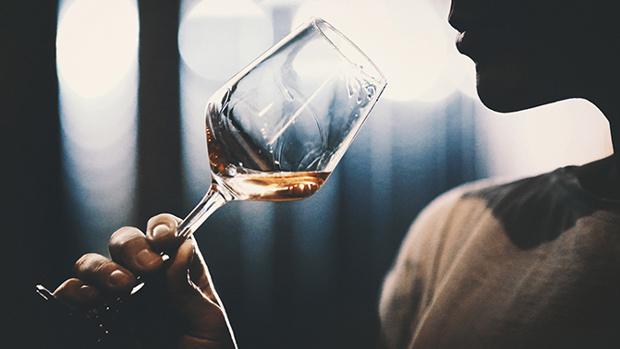Julie Harrison - White Wine Making
- Publish Date
- Thursday, 25 May 2017, 3:18PM

Photo: Getty Images
- Author
- By Julie Harrison
After all the hard work put in to growing great grapes it is obviously very important to treat this fruit with tender loving care in the winery. You can’t make good wine from bad grapes but you can make bad wine from good grapes. Different wine making techniques come into play for different varieties but the basic science is the same for all; wine yeast converts the sugar in the grapes to alcohol and carbon dioxide. In nature, grapes left sitting in a bucket will, with the help of natural yeasts, ferment to produce something vaguely resembling wine. Over the centuries winemakers have developed techniques to take the guess work out of wine making to produce mostly faultless wines with the emphasis being on getting as much out of that expensive fruit as possible.
Upon arrival at the winery white wine grapes may go through the de-stemmer/crusher which, as the name suggests, removes the stems and gently crushes the grapes allowing more juice to be extracted. The crushed grape mix is called the must which is then sent to the press which gently squeezes the grapes to extract the juice. Juice collected initially before pressure is applied is called free-run juice and as it is considered the best quality is usually kept separate. The more the grapes are pressed the more extraction you get from the skins and seeds which will produce a harsher wine. Winemakers may choose to blend in some of the pressed juice or wine made from this pressed juice to add body and flavour to the final wine. Prior to pressing, fuller bodied whites may be left to macerate for a period of time after crushing to allow extraction of flavours and aromas from the skins before pressing. In other cases the crusher step is missed completely and the grapes go straight to the press to minimise the extraction of phenolics from the skins and seeds of the grape. This is the case for hand picked, delicate varieties and grapes for Champagne production.
The juice is now sent to a tank where it is allowed to settle for a period of time at low temperature which is called cold settling. The solids sink to the bottom of the tank and the resultant clear juice is racked or pumped into some sort of fermentation vessel, most often a stainless steel tank. Centrifugation may also be used to obtain clear juice for fermentation. Once the winemaker has nice clear juice the wine yeast is added and the fermentation begins. This is usually under some sort of temperature control, anywhere between 11-18 degrees centigrade, allowing for a long, slow fermentation which preserves the fresh, fruity characteristics of the juice. Sometimes the juice is fermented in wooden barrels, resulting in a warmer fermentation temperature, and sometimes the winemaker relies on the natural yeast that populates the winery to carry out the fermentation. Chardonnay is often barrel fermented, whereas a variety such as Riesling is fermented in stainless steel tanks. Barrel fermentation and the use of wild yeasts will add complexity to a wine.
If a dry wine is required then the fermentation will continue until the yeast has used up all the sugar. If a sweeter style is required the winemaker stops the fermentation when the required sugar level is reached. (residual sugar). Some white wines, in particular Chardonnay, may also undergo a bacterial fermentation known as malolactic fermentation. This converts the more acidic malic acid to softer lactic acid lowering the acidity of the wine and giving the wine a creamier, buttery character.
At the end of fermentation the wines are in the fermentation vessel along with dead yeast cells called lees. Sometimes the wine is left to mature on the lees which adds anther layer of complexity to the final wine. Other wines are taken off the lees straight away and are sent to stainless steel tanks. To avoid cloudy wine there is a general clean up of the wine which is called fining. Fining agents are added which attract the floaty bits in the wine and make them sink to the bottom of the tank leaving the clear wine to be racked off. Fining agents include Bentonite clay, egg white, Isinglass and Casein. Centrifugation is another method used to clean up the wine following fermentation. Winemakers may opt to minimalise some of these clean-up processes as taking out the floaty bits can also take out some of the tasty bits. White wines are subject to a process called cold stabilisation. This involves chilling the wine down to -3 degrees C (wine doesn’t freeze at this temperature) which precipitates out the tartrates preventing these harmless crystals forming in the bottle in your fridge.
Depending on variety, wines are aged in the tank or barrel for however long the winemaker wants. Sauvignon Blanc is most often aged briefly in tank whereas Chardonnay can be aged in a barrel for a number of months. Wines are then filtered before bottling which is especially important for sweet wines as you don’t want rogue yeast cells starting a fermentation in the bottle. Blending can occur throughout the winemaking process and is an integral part of wine making. Winemakers will look hard at individual batches of wine and decide what to blend together to obtain the final wine they are after. Winemakers make a number of critical choices throughout the winemaking process that determine the final style of wine they are making with the aim of producing the best possible wine from the grapes they have been provided with
About Julie
Julie and soon to be husband, Frenchman, Richard Guerra own Frog in a Barrel Wine Shop and Thirsty Frog Wine Bar in Milford. After developing an interest in wine at Massey University, Julie completed a Post Graduate Diploma in Wine Making and Viticulture at the University of Adelaide and following this worked in Australia for a number of years at Penfold Wines and Andrew Garrett Wines.
Travelling in Europe Julie developed an interest in European wines and now Richard and Julie import wine from France to sell in their shop and bar. Julie is looking forward to sharing her knowledge of local and imported wines.

Take your Radio, Podcasts and Music with you

